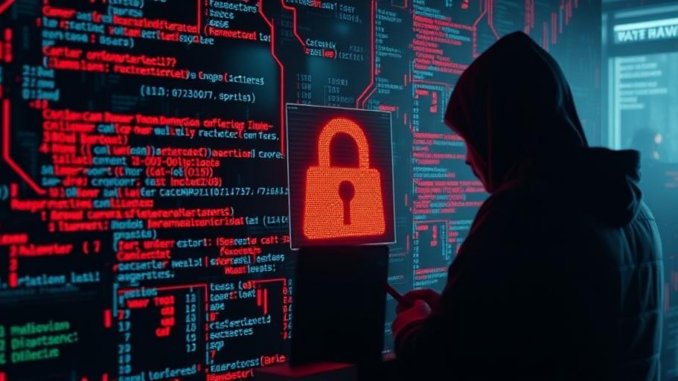
Summary
AT&T paid a $370,000 ransom after a data breach exposed call and text logs of millions of customers. The hacker, allegedly an American living in Turkey, targeted AT&T’s Snowflake cloud storage. This incident highlights the increasing risks of ransomware attacks and the difficult decisions companies face in protecting customer data.
Explore the data solution with built-in protection against ransomware TrueNAS.
** Main Story**
Okay, so you heard about the AT&T breach, right? Pretty big deal. Let’s break it down. Back in April 2024, AT&T confirmed they had a data breach that exposed the call and text message logs of, get this, nearly 110 million customers. Can you imagine the scale? It’s not the kind of news you want to be waking up to.
Apparently, the hackers managed to get into AT&T’s Snowflake cloud storage for about 11 days. They didn’t grab the actual content of the calls or texts, thankfully, nor did they get names or Social Security numbers. But they did get the phone numbers involved, how many times they interacted, and how long those calls lasted in total. Still, a ton of sensitive metadata.
The Fallout: Money, Mayhem, and More
Then, things got even crazier. Reports started circulating that AT&T actually paid a $370,000 ransom in Bitcoin to these hackers. The guy they think did it, an American citizen chilling in Turkey, supposedly wanted a million bucks at first but settled for less. Now, it turns out this hacker might be linked to the ShinyHunters group and might have been involved in that T-Mobile breach back in 2021 too. Talk about a repeat offender!
The whole thing kicked off some serious investigations, not to mention a bunch of questions about how secure cloud storage really is. AT&T was under the microscope for their security setup and, of course, for deciding to pay the ransom. Some security folks believe paying just encourages more of these attacks. I tend to agree. Companies need to invest in proactive security rather than rewarding bad actors, but I digress. AT&T, for their part, said they’re working with the cops and beefing up their cybersecurity.
Ransomware’s Reign: A Growing Problem
This AT&T situation is just a prime example of how ransomware is becoming a bigger and bigger problem, especially for large companies sitting on mountains of valuable data. These attacks can really hurt financially and damage a company’s reputation. It forces them into these impossible choices: pay up or risk having everything leaked.
- For example, I remember one small business owner telling me how a ransomware attack nearly bankrupted his company, it was terrifying.
It really underscores that companies need solid cybersecurity plans, like using multi-factor authentication and having strong oversight of their vendors.
Decoding the Threat Landscape
Ransomware, at its core, is about locking up an organization’s data and demanding money to unlock it. Hackers often go after the most critical, sensitive stuff to put the most pressure on the victims. The consequences? Well, they can be disastrous: lost revenue, damaged brands, and even disrupted services. Not good.
Defense Strategies: Protecting Your Assets
So, how do you protect yourself from this mess? There are some solid strategies:
- Passwords & MFA: Use strong passwords, please, and turn on multi-factor authentication. It’s annoying, I know, but so worth it.
- Keep Things Updated: Update your software and operating systems regularly. Patch those vulnerabilities, you know?
- Back It Up: Regularly back up your critical data. It’s your safety net. Think of it as your digital parachute.
- Train Your Team: Teach your employees about phishing scams and other common tricks hackers use. Your people are often your first line of defense.
- Incident Plan: Have a plan for what to do if you get hit. Don’t wait until it happens to figure things out.
Look, that AT&T breach should serve as a wake-up call. Ransomware isn’t going anywhere, and companies have to make cybersecurity a top priority. And, while AT&T took steps to fix things and improve their security, it just shows how tough it is to defend against these sophisticated cyberattacks.


The AT&T breach underscores the significant financial risks associated with ransomware. Beyond the ransom itself, what are some often overlooked costs businesses face after such an attack, such as legal fees, recovery expenses, and long-term reputational damage?
That’s a great point! The hidden costs are often the most damaging. Beyond the immediate expenses, the long-term reputational hit can be devastating. Companies might see decreased customer trust and difficulty attracting new clients, impacting revenue for years. What strategies can businesses implement to mitigate that reputational damage?
Editor: StorageTech.News
Thank you to our Sponsor Esdebe
The alleged hacker’s location in Turkey raises interesting jurisdictional questions. How do international laws and agreements impact the pursuit and prosecution of cybercriminals operating across borders in cases like the AT&T breach?
That’s a really insightful point about jurisdictional challenges! It highlights how complex these international cybercrime cases can become. The need for clear, enforceable international agreements is greater than ever to effectively pursue and prosecute cybercriminals across borders, especially with the rise of cloud-based attacks. Thanks for raising this important issue!
Editor: StorageTech.News
Thank you to our Sponsor Esdebe